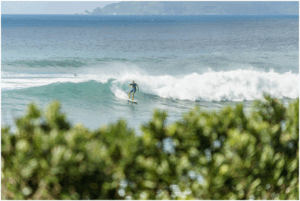Travel content can be useful not just for inspiring others but also for creating real benefits for yourself. High-quality traveling videos can help you achieve numerous benefits and positively impact your personal growth and professional opportunities.
Read further to discover their advantages and learn four tips that can help you make your trip footage instantly better.

Source high-quality, licensed visuals from Depositphotos.com for your commercial purposes
Contents
- How can you benefit from making high-quality trip videos?
- By helping you grow your personal brand and audience
- By allowing you to unlock monetization options
- By granting you networking and collaboration opportunities
- By helping you earn passive income
- By allowing you to build existing skills and learn new ones
- How to make a good traveling video
- 1. Master storytelling
- 2. Use standard aspect ratios for one video
- 3. Focus on movement and transitions
- 4. Capture authentic sounds
- To sum up
How can you benefit from making high-quality trip videos?
As technologies advance and social media become a significant part of our lives, people rely on them more and more for various things, including traveling. In fact, 66% of TikTok users confirm they either have or would let the platform choose their next holiday destination. This is one of many reasons why making high-quality travel videos with tips or other content related to your trips can benefit you personally and professionally.

Here’s how it can help you:
By helping you grow your personal brand and audience
It doesn’t matter where you’re posting trip videos (YouTube, TikTok, Instagram, or another platform); in any case, doing so can help you:
- Attract a loyal audience that loves travel, storytelling, and visuals;
- Set yourself apart from casual content creators;
- Become a well-known creator, as travel content is highly shareable and often goes viral.
By allowing you to unlock monetization options
Those who consistently make travel videos can benefit from the following:
- Sponsored trips (tourism boards, hotels, airlines);
- Affiliate marketing (gear, travel services);
- YouTube (or other platform) monetization;
- Brand partnerships;
- Selling travel guides or editing presets;
- Patreon or community memberships.
By granting you networking and collaboration opportunities
People tend to trust creators who consistently show quality work. Your travel videos can help you connect with tourism businesses, creative agencies, or other creators, as well as unlock potential collaboration opportunities on content, events, or even travel projects.
By helping you earn passive income
Well-made travel videos posted on YouTube or other streaming platforms can bring you views (ad revenue) for years, serve as a portfolio for future brand deals, and eventually be repurposed into smaller content pieces (reels, shorts, blog visuals).
By allowing you to build existing skills and learn new ones
You need to know a lot to make a travel video. Good footage requires knowledge of storytelling, editing, scripting, and voiceover (or feeling confident in front of the camera). You also need to have camera skills and potentially master marketing and SEO to help your content reach a wider audience.
How to make a good traveling video
One of the most important characteristics of good travel videos is that they aren’t just about capturing beautiful places; they also share your experience. If you want your videos to stand out and connect with viewers, consider the following tips:
1. Master storytelling
Many beginner travel videos look like beautiful yet random clips glued together with music. But what makes a travel video truly memorable is storytelling—after all, stories are remembered up to 22 times more than facts.
How can you add storytelling to your footage? The simplest tip for beginners is to start thinking of your trip as if it were a short movie and create a structure for this “movie.” The structure can be more straightforward, starting with your arrival and ending with a farewell, final view, or reflection on the trip. It can also be a short story from your travels, such as when you’re looking for a special place you wanted to visit and finally find it. This can turn raw footage into a story people care about.
2. Use standard aspect ratios for one video
This is a small technical tip that saves a lot of future editing stress. Common film aspect ratios are the following:
- 16:9 (horizontal) for YouTube;
- 9:16 (vertical) for TikTok, Instagram Reels, and Shorts;
- 1:1 (square) for Instagram feed posts.
If adjusting ratios later seems challenging, you can film all parts of your future travel video in one format. And if you don’t mind further editing and are looking for more versatility, try leaving a bit of “safe space” around your subject (don’t zoom too close) when shooting. This will allow you to crop your footage into multiple aspect ratios later.
3. Focus on movement and transitions
Approaching both of them right can help you instantly make your videos more lively and interesting. Static shots themselves are fine, too, but if you use too many of them, the footage might feel flat.
Here’s how you can liven it up:
- By filming while walking or turning around;
- By recording vehicles moving past;
- By showing yourself entering or exiting scenes.

As for the transitions, if you are a beginner travel video editor and creator, the main thing you should know is that they help create visual flow and energy. You can achieve this by quick camera movement to the side, lining up two similar scenes, or switching from fast to slow motion. This will make your video more dynamic and fun to watch.
4. Capture authentic sounds
They can create half of the experience and also become a great, lively addition to the music. For instance, you can record street noise, nature sounds (like waves, wind, and birds), local conversations or markets, and even your own voice reacting to places. This will help create immersion and make your video more personal, as if your audience were there with you.
To sum up
Well-made traveling videos can open doors to new audiences, monetization opportunities, creative partnerships, and even passive income streams. Plus, the process of making travel videos teaches you storytelling, filming, editing, and marketing: skills that stay valuable for life. So, next time you pack your camera for a trip, remember: your first travel video could be the start of something much bigger.
























